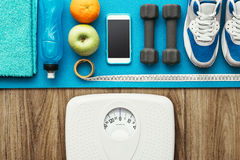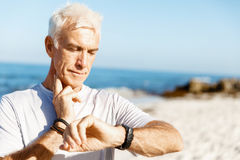By Joel Baker, ACSM-CPT, FMS-L1
The Health and Wellness World has become so saturated with information, it can make one’s head spin. One product promises results overnight, while another assures a brand new, healthier you in 7 days. Which should you go for? My perspective? Choice C: Always the option with sustainable results. Does it seem feasible that 7 days can fix any issue that has taken a good amount of time to accumulate?
Taking a simple approach to fitness can lead to dramatic long-term benefits.
Find an enjoyable physical activity. Walking your dog, biking with a loved one, pickle ball with friends, weightlifting with a coworker – these are all options that provide social outlets in addition to physical activity. By making the activity feel more like play, your brain is more likely to seek it out more.
Try adding more vegetables as opposed to restricting things. Again, our brains like abundance. What sounds more appetizing, eating a large plate of flavorful vegetables with a serving of protein, or minimizing sugar?
To calculate engagement, check your “FITT”ness.

Frequency – How many times per week am I engaging in activity?
Intensity – How high is my heart rate getting? How much weight am I lifting?
Type – What kind of activity am I performing? (and do I enjoy it?!)
Time – How long am I performing the activity?

To track health progress, one metric you can utilize is resting heart rate. Most activity trackers (Garmin, FitBit, Apple Watch) have an option that tracks your resting heart rate while you sleep. Simply wear the tracker overnight! You can also find your pulse and count how many times your heart beats in 15 seconds, then multiply that number by 4. This should be done before starting your day, while lying in bed after awaking.
This number (your RHR) will likely decrease as you engage in more physical activity over time. This is a largely positive adaptation as your heart get more efficient at circulating blood through your body. A healthy resting heart rate is between 60 and 100 bpm, with most of the population being closer to 60bpm.
BMI (Body Mass Index) is not regarded as a commonly measured statistic unless you’re interacting with insurance companies. It is most handily used to calculate the average “health” of a large population – exactly what insurance companies and large organizations would like to know. In my opinion there are more important statistics for personal tracking as BMI only looks at height and weight. This doesn’t take into account muscle mass, bone weight, adipose (fat) mass, etc. If you were to calculate it, you would take your weight in Kg (weight in lbs/2.2) and divide by your height in meters squared (your height in inches/39.37 multiplied by itself).
Body Fat Percentage and blood pressure are also good, important and very informative metrics to consider. Tracking your body fat percentage can be done in research and medical centers with DEXA and ADP, but can also be easily gaged with Skinfold Calipers (measuring seven specific sites on your body), Body Circumference (measuring specific sites with a tape measure), Body Fat ‘Smart’ Scales (electrical currents are sent through the body and measured with a foot-to-foot impedence meter. Blood pressure can easily be taken at home or in a doctor’s office. Generally speaking, Systolic (top number) should be less than 120 and Diastolic (bottom number) should be less than 80. High blood pressure can lead to heart disease, heart attack, stroke, kidney and visual damage.
A really easy way to track progress is to weigh yourself regularly and also, simply, just see how your clothes fit. Checking in with your energy levels is also a very simple, user-friendly and important tool. If you feel more energetic, your clothes are a bit looser, but you’re the same weight – congratulations! You’re likely putting on muscle and losing fat (fat tissue is less dense than muscle!)
It’s very important to know and regulate your numbers with proper exercise and nutrition practices. Make good choices to live a proactive, healthy lifestyle, monitor yourself regularly (but not obsessively), do what it takes to course correct when necessary and enjoy the process!









